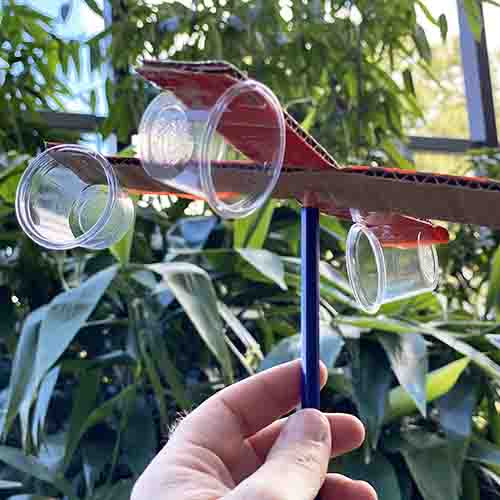Picking the Right Anemometer: A Comprehensive Purchasing Guide
Picking the Right Anemometer: A Comprehensive Purchasing Guide
Blog Article
All You Required to Understand About Anemometers: Just How They Function, Why They Issue, and Where to Make use of Them
Anemometers, however typically forgotten in the world of clinical tools, play a critical function in different areas, providing beneficial insights right into wind rate and airflow patterns. Understanding the mechanics behind these tools is essential for anybody seeking to harness the power of this data. From meteorologists tracking climate patterns to engineers making structures with wind lots in mind, the applications of anemometers are diverse and far-ranging. As we delve right into the details of anemometer modern technology, we will reveal the internal workings of these tools, their value, and the essential factors to consider when selecting the right anemometer for particular applications.

Anemometer Fundamentals
A necessary tool utilized to measure wind rate and instructions, the anemometer plays a critical role in weather forecasting and various markets. An anemometer commonly is composed of three or 4 mugs that revolve in the wind, a vane that directs into the wind, and sensors to track the movements or rotations.
There are various kinds of anemometers available, consisting of cup anemometers, vane anemometers, hot-wire anemometers, and sonic anemometers, each with its unique features and applications. Mug anemometers are typically used for standard wind rate dimensions, while vane anemometers are preferred for directional measurements.
Concepts of Anemometer Procedure
Building on the foundational understanding of anemometer fundamentals, the principles of anemometer procedure illuminate the mechanics behind wind speed and instructions dimensions. Mug anemometers, for circumstances, have three or more cups that record the wind, creating them to spin much faster as the wind speed rises. Hot-wire anemometers depend on a warmed cable that cools down as wind passes over it, with the price of cooling identifying the wind speed.
Significance of Anemometers
Anemometers play a critical function in measuring wind speed and direction, giving important data for weather forecasting, environment researches, ecological surveillance, and aviation operations. Meteorologists depend on anemometers to collect precise wind information, aiding them understand weather patterns, anticipate storms, and issue timely cautions to the public. Wind ranch drivers utilize anemometers to evaluate wind conditions and maximize power manufacturing from wind generators.
Applications Across Various Industries
In the sustainable energy market, anemometers play a critical function in examining wind conditions for wind ranch placements, guaranteeing optimal power manufacturing. Industries like construction and mining use anemometers to monitor wind rates, vital for safety methods, specifically when functioning at heights or in open-pit mines where strong winds can present hazards. In farming, anemometers assist farmers in managing crop splashing by giving real-time data on wind rate to stay clear of drift.

Choosing the Right Anemometer for Your Needs
Selecting the suitable anemometer customized to your certain demands is vital for acquiring exact wind speed and direction dimensions. When selecting an anemometer, think about aspects such as the designated application, called for dimension range, environmental problems, and desired attributes. For general purposes, a mug anemometer is appropriate for gauging wind speed, while a vane anemometer provides wind direction data. Hot-wire anemometers are suitable for reduced airspeed measurements, and ultrasonic anemometers provide high precision and longevity.

Conclusion
Finally, anemometers play a crucial function in determining wind rate and instructions throughout various industries. Recognizing the principles of anemometer operation is essential for choosing the best tool for details demands. From meteorology to aviation, anemometers are important devices for gathering accurate information and making sure safety and security in different applications. It is very important to consider the value of anemometers in order to make informed choices when selecting one of the most appropriate tool for determining wind problems.
There are different types of anemometers readily available, including mug anemometers, vane anemometers, hot-wire anemometers, and sonic anemometers, each with its unique features and applications. Cup anemometers are generally used for basic wind speed measurements, while vane anemometers are favored for directional dimensions. Hot-wire anemometers are ideal for reduced airspeeds, and sonic anemometers are ideal for high-precision dimensions in research and industrial settings.Building on the foundational understanding of anemometer basics, the principles of anemometer operation elucidate the technicians behind wind rate and instructions dimensions. For general purposes, a cup anemometer is useful reference suitable for gauging wind rate, while a vane anemometer offers wind instructions data.
Report this page